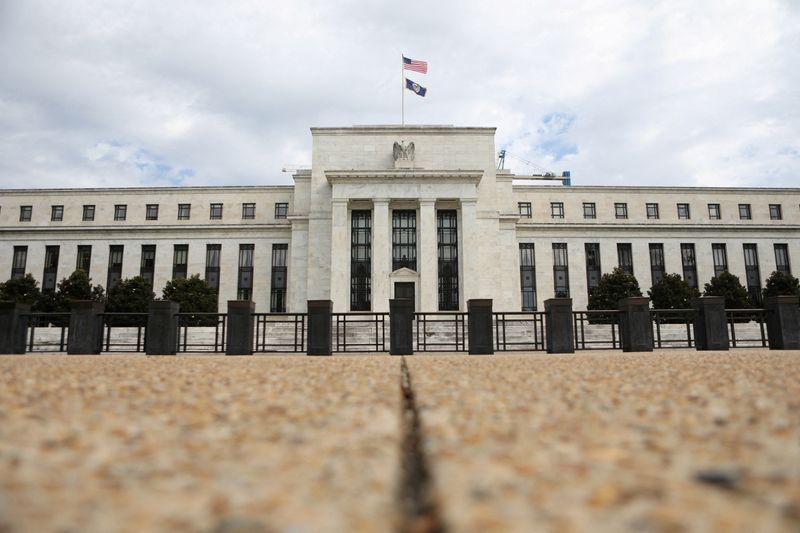By Howard Schneider
WASHINGTON (Reuters) - Prices paid by U.S. businesses rose less than expected in October with some key components registering an out-and-out decline, another sign inflation may be easing and another data point in favor of a slower pace of Federal Reserve rate increases.
The Producer Price Index measures inflation at the firm level, showing the change in prices paid for the supplies, materials and services that businesses use, and for the final goods that retailers resell.
Prices for final goods less volatile commodities and shipping costs rose 0.2% in October, continuing a slow pace for those "core" items. More notably service costs declined for the first time since November 2020, driven lower by falling prices for trade services, an item that represents the margins earned by resellers.
The drop in margins in particular is something economists and Fed officials have been anticipating as supply chains eased, inventories grew, and demand waned in the face of tighter Federal Reserve monetary policy - all setting the stage for tougher price competition.
"You'd actually expect more competitive pressure to start bringing those costs down," Fed Vice Chair Lael Brainard said Monday at a Bloomberg event. "It's a process that you would expect at this point in the cycle. I'm certainly looking at that closely. And of course, that would contribute to disinflation."
U.S. stock markets surged Tuesday morning after the release of the producer price index, the second inflation data point in the space of a week to stoke market bets that price pressures were starting to slow sufficiently to coax the Fed away from delivering a fifth straight 75-basis-point rate hike next month. It also dented the case for the Fed's benchmark rate climbing above 5% next year.
Data last week showed the pace of consumer inflation slowed to 7.7% in October, still high, but beginning to move in a direction which, if sustained, may allow the Fed to take a more tempered approach to tightening monetary policy in the months ahead. The CME Group's (NASDAQ:CME) FedWatch tool showed bets shifting in favor of a half-point increase in the Fed's target policy rate when the central bank meets next on Dec. 13-14, to a range of 4.25%-4.50%, with a further 25-basis point rise at the following meeting ending on Feb. 1, 2023. The model shows the Fed rate now rising only to 4.75%-5.00% in March, whereas a week ago it showed the Fed rate likely exceeding 5% by then. Bond yields sank, with the inflation-sensitive 10-year Treasury note's yield dropping to the lowest since early October at 3.78%. It has now pulled back by roughly half a percentage point from a 15-year high touched in mid-October. Market-based measures of inflation expectations also sank. The breakeven-inflation rate on the 5-year Treasury Inflation Protected Security slid to the lowest in a month at 2.38%.

A drop in business margins was "just a matter of time" after a dramatic run-up during the pandemic when supply chain difficulties gave businesses unusual pricing power, Pantheon Macroeconomics Chief Economist Ian Shepherdson wrote on Monday.
Shepherdson has been focused on the producer price index as more important than usual because of market distortions driven by the pandemic, and said that a drop in the index's margin components would influence the direction of consumer prices going forward.